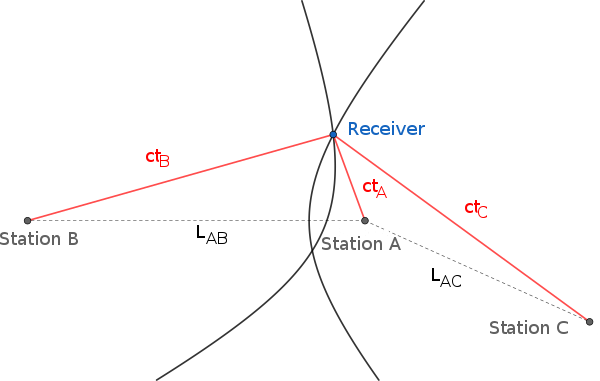|
|
Navigation equations
Hyperboloids
If the pseudorange between the receiver and satellite $i$ and the pseudorange between the receiver and satellite $j$ are subtracted, $p_i-p_j$, the common receiver clock bias (b) cancels out, resulting in a difference of distances $d_i-d_j$.

The locus of points having a constant difference in distance to two points (here, two satellites) is a hyperbola on a plane and a hyperboloid of revolution (more specifically, a two-sheeted hyperboloid) in 3D space (see Multilateration). Thus, from four pseudorange measurements, the receiver can be placed at the intersection of the surfaces of three hyperboloids each with foci at a pair of satellites. With additional satellites, the multiple intersections are not necessarily unique, and a best-fitting solution is sought instead.
Inscribed sphere
The receiver position can be interpreted as the center of an inscribed sphere (insphere) of radius $bc$, given by the receiver clock bias $b$ (scaled by the speed of light $c$). The insphere location is such that it touches other spheres. The circumscribing spheres are centered at the GPS satellites, whose radii equal the measured pseudoranges $p_i$. This configuration is distinct from the one described above, in which the spheres' radii were the unbiased or geometric ranges $d_i$. |

|
|
|